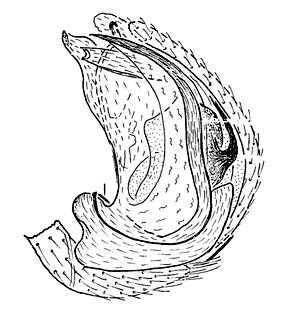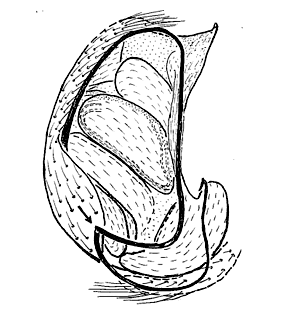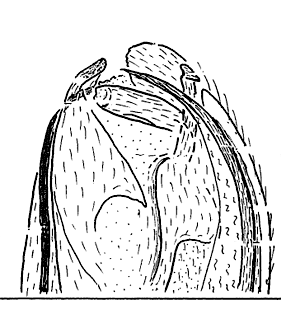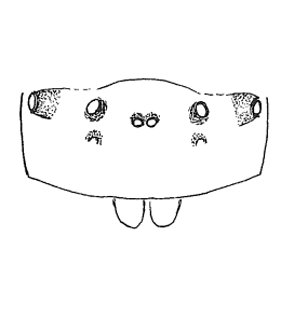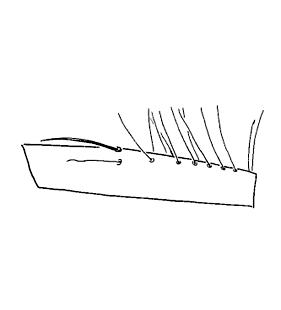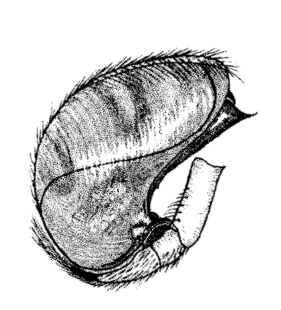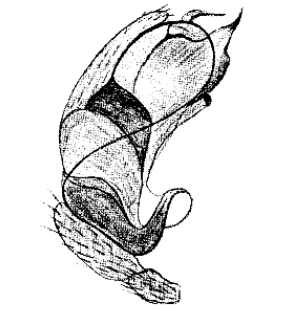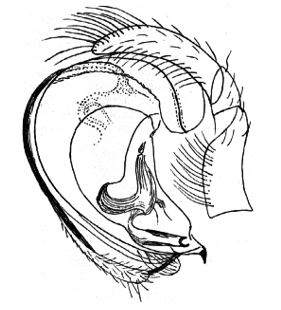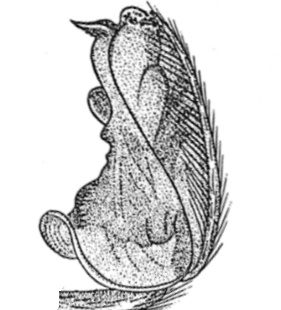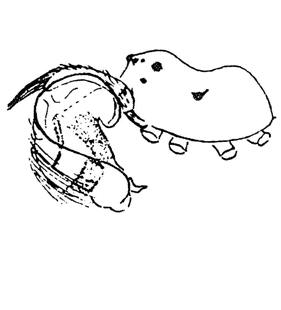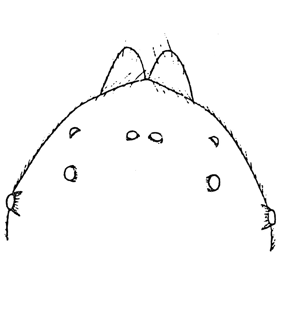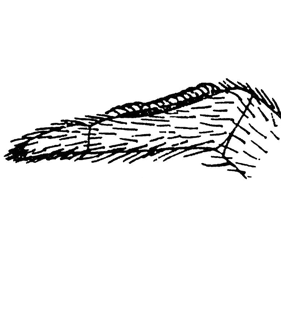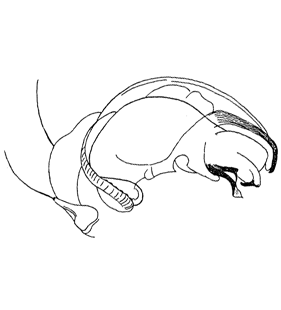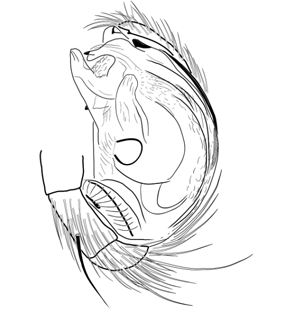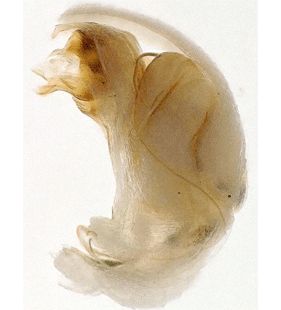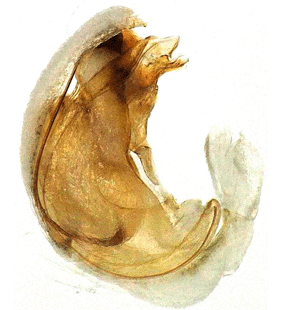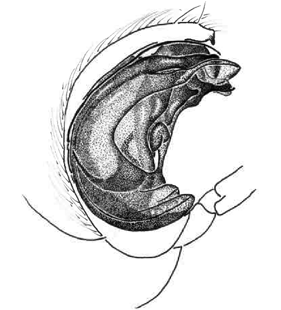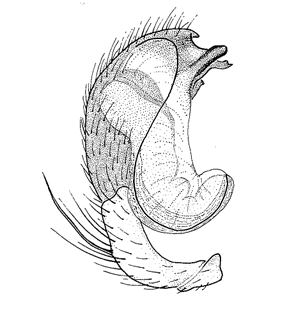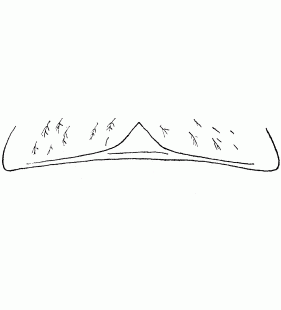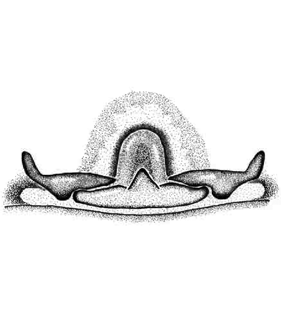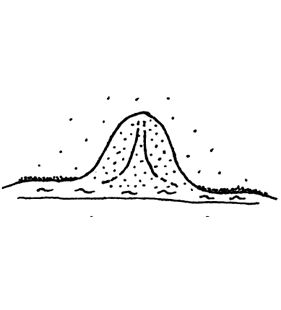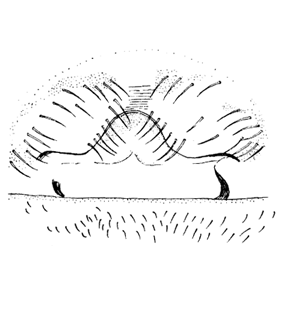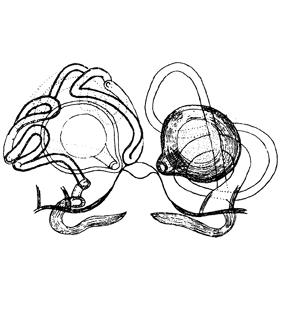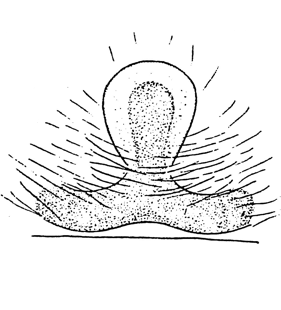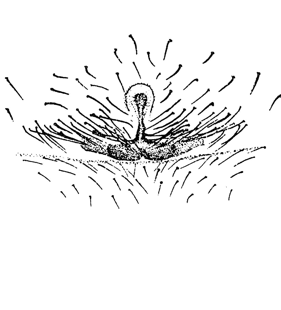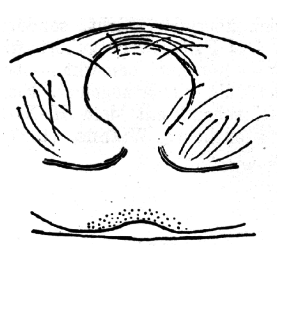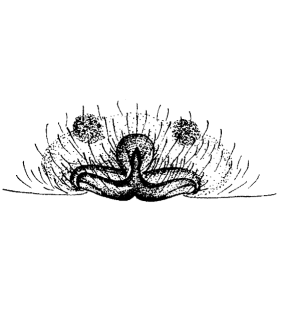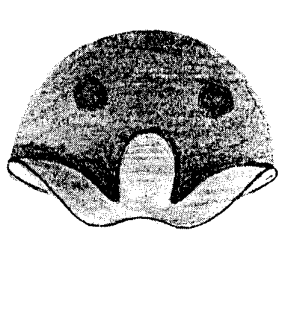Uloboridae: Hyptiotes Walckenaer, 1837
|
In case you find an error or have a specific suggestion, please follow this link: click
|
|||||||||||
| 1 |
Males |
||||||||||
| - | Females |
||||||||||
| 2 (1) |
Length of prosoma and cymbium about 1.4 – 1.6 mm. Bulbus (in retrolateral view) apically with a large and pointed median apophysis |
||||||||||
| - | Length of prosoma and cymbium about 0.9 – 1.25 mm. Bulbus apically different |
||||||||||
| 3 (2) |
The embolus originates almost in the middle of the bulbus. Length of prosoma and cymbium about 1.4 mm. In humid habitats, France Hyptiotes dentatus Wunderlich, 2008 |
||||||||||
| - | The embolus originates at the basis of the bulbus. Length of prosoma and cymbium about 1.6 mm. Not in humid habitats. Western Palearctic Hyptiotes paradoxus (C. L. Koch, 1834) |
||||||||||
| 4 (2) |
Bulbus apically with a complicated structure that includes a sclerite bent in a right angle. Greece, southern Russia Hyptiotes gerhardti Wiehle, 1929 |
| |||||||||
| - | Bulbus apically without such a structure. Western Palearctic Hyptiotes flavidus (Blackwall, 1862) |
||||||||||
| 5 (1) |
Length of the prosoma 1.1 – 1.5 mm, epigynal groove usually with a median ridge, posterior margin of the epigyne protruding, convex medially, receptacula seminis small, spaced by 3 to 4 times their diameter, introductory ducts long and coiled. Western Palearctic Hyptiotes flavidus (Blackwall, 1862) |
| |||||||||
| - | Different |
||||||||||
| 6 (5) |
Length of the prosoma 1.4 – 1.7 mm, epigynal groove without a median ridge, posterior margin of the epigyne straight, receptacula seminis large, spaced by their diameter, introductory ducts long and coiled. Greece, southern Russia Hyptiotes gerhardti Wiehle, 1929 |
| |||||||||
| - | Length of the prosoma about 1.8 mm, epigynal groove anteriorly wider than in the other species, almost circular, posterior margin of the epigyne concave medially, receptacula seminis large, spaced by their diameter, introductory ducts short, describing about a single loop only. Western Palearctic Hyptiotes paradoxus (C. L. Koch, 1834) |
|

